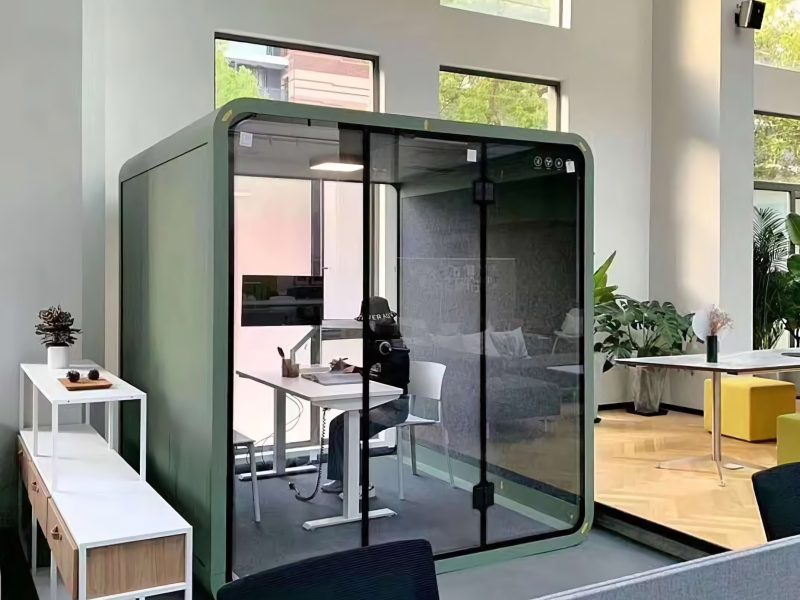
With the development of technology and the popularization of quality education in the country, the teaching environment and educational equipment have undergone tremendous changes, gradually evolving from the traditional blackboard teaching model to an intelligent and efficient teaching model. After undergoing market “baptism”, remote education and online classrooms have gradually been accepted by the public. To adapt to online education, “classroom” shared workspaces have also gradually entered people’s vision.
I. How significant is the role of shared workspaces in education and training?
For example, in some customized courses and personalized one-on-one tutoring programs, teachers and students require an independent and quiet space. Shared workspaces not only have strong sound insulation effects but can also establish a quiet and comfortable learning environment.
Furthermore, shared workspaces have significant advantages in space planning. The size of a shared workspace for two people is 1230mm long x 1500mm wide x 2300mm high (customizable according to demand), occupying only about 2 square meters, but it is sufficient to meet the needs of ordinary students’ learning and one-on-one tutoring. Multiple shared workspaces can be placed in a typical meeting room to meet high-density deployment and simultaneous learning by multiple groups.
Shared workspaces are easy to install, with a “plug-and-play” design that can be installed in just two hours, without the need for long waiting times. They are also mobile and flexible to install without considering meeting room renovations. The interior of the shared workspace can be customized according to the user’s needs, while the exterior design can support brand-specific customization, displaying brand logos.

II. The advantages of using shared workspaces
In terms of configuration, shared workspaces have greater advantages over collective classrooms. They use 38mm thick double-layer aluminum honeycomb panels and high-density damping sound insulation mats, with sound insulation up to 30 decibels. Multiple noise reduction designs not only reduce the noise of the fresh air system but can also completely renew the air inside the cabin every two minutes. The standard 4000K natural light color temperature meets the required lighting needs for learning.
In terms of function, shared workspaces can meet the quiet environment required for students’ self-study and protect the privacy of one-on-one tutoring between teachers and students. They can provide students and teachers with independent space for learning, improving learning efficiency.
In music teaching, shared workspaces also play a significant role. In the same training institution, students playing different instruments or music can easily interfere with each other, and renting multiple training rooms can increase costs. However, shared workspaces can replace individual training rooms, achieving a 35-decibel sound insulation effect, avoiding mutual interference.
Students are the future hope of the country, and it is necessary to create a good learning environment for them. Choosing shared workspaces allows students to study with peace of mind and cultivate future pillars for the country.
